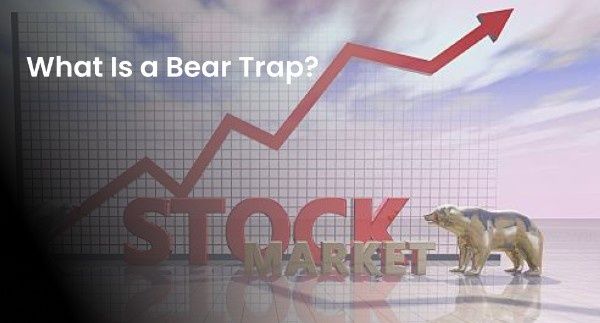Difference Between IPO and OFS

Raising funds through an equity issue like an IPO is a cost-effective way to get access to capital. It is for this reason that most companies often prefer to raise capital by issuing their shares to the public.
As an investor, you need to know the different aspects of an IPO to make an informed investment decision. One such aspect of a public issue that you need to be aware of is OFS. In this article, we’re going to see what it is and the difference between an IPO and an OFS.
What is an IPO?
IPO is an acronym for Initial Public Offering. It is an extensive process through which a company issues its equity shares to the public for the first time. The company gets funds in exchange for issuing equity shares to interested investors. The funds that the company raises are used to fulfil its various objectives and financial requirements. The investors who purchase the shares become the company’s shareholders and get the right to vote on certain business matters.
How Does an IPO Work?
A company desirous of issuing its shares to the public for the first time needs to follow certain steps. Here’s an overview of how a typical Initial Public Offering works.
- The company first appoints a lead manager (LM). The LM is an entity that’s responsible for assisting in fulfilling the various regulatory and other requirements of an IPO.
- The company, with the assistance of the lead manager, compiles the Draft Red Herring Prospectus (DRHP). The prospectus is a voluminous document containing extensive information about the company’s history and business model, its financial statements and details of the IPO.
- Once compiled, the DRHP is filed with the Securities and Exchange Board of India (SEBI) for approval.
- If the SEBI approves the DRHP and the IPO, the company then proceeds to circulate it widely to the public. It may also start marketing the issue through advertisements to generate investor interest.
- Based on the market demand and reception that the IPO gets, the company along with the lead manager, sets the price for the IPO.
- Simultaneously, it also files the final Red Herring Prospectus (RHP) with the SEBI and the stock exchanges. The RHP contains details of the opening and closing dates of the issue.
- Once the issue is open, interested investors start to apply for the IPO by placing orders within the notified price range.
- After the issue closes, the company analyzes all the bids placed by interested investors and sets a cut-off price. Investors whose bids are on or above the cut-off price will be eligible for share allotment, whereas investors whose bids are below the cut-off price will be disqualified.
- Within the next few days, the company transfers the shares to the eligible investors’ demat accounts. If the issue is oversubscribed, investors may only receive a fraction of the amount they bid for.
- Once all the shares are allotted to the investors, the company lists its shares on the stock exchanges, where they can be bought and sold freely.
What is an OFS?
Now generally, most IPOs feature two parts. The first part is a fresh issue of shares, where the company issues fresh equity shares to the public. The proceeds from the fresh issue of shares fully go to the company and can be used by it to fulfil its financial objectives.
The second part, meanwhile, is the OFS, also known as the Offer for Sale. It is a unique mechanism that existing shareholders can use to reduce their holdings or exit a company completely by selling the shares they hold to the public.
How Does an OFS Work?
The decision to conduct an Offer for Sale is generally taken by the promoters, institutional investors, venture capitalists or other large existing shareholders of the company in a general meeting.
Although the shareholders are the deciding authority for an OFS, it is usually the company that organizes the entire process with the assistance of a lead manager. Unlike a fresh issue, the proceeds from an Offer for Sale go fully to the selling shareholders and not the company.
The process that needs to be followed to conduct an OFS is mostly the same as that of a regular IPO.
What is the Difference Between IPO and OFS?
There are quite a few differences between an Initial Public Offering (IPO) and an Offer for Sale (OFS). Let’s take a look at a more detailed comparison of OFS vs IPO.
Objective
The primary objective of an IPO is to raise funds by offering new equity shares to the public. It is one of the easiest and most inexpensive ways to access substantial capital.
On the other hand, the objective of an Offer for Sale is to provide existing investors with a way to reduce their stake or exit the company completely.
Source of Shares
In an Initial Public Offering, especially one that has a fresh issue component, the company creates new equity shares and offers them to the public.
However, in the case of an OFS, no new shares are created. Instead, the existing shares the selling shareholders own are offered to the public.
Right to the Capital Raised
The proceeds from an IPO belong to the company and can be used to repay debt, expand the business, research and develop new products and services and for other corporate purposes.
Since it is the shareholders who are selling their holdings to the public in an Offer for Sale, the company does not receive any of the proceeds from the sale. Instead, all of the funds go directly to the selling shareholders.
Impact on the Company’s Shareholding Structure
The creation of new shares during an IPO increases the total equity share capital of the company. Such a move can have a positive impact on the debt-to-equity ratio of the company, making it easier for the company to borrow funds in the future.
Since only existing shares of selling shareholders are offered to the public, an Offer for Sale neither has a positive nor a negative impact on the company’s share capital in any manner.
Conclusion
With this, you must now be aware of the difference between an IPO and an OFS. To sum up, an IPO is the first-time offering of new shares by a company to raise capital, whereas an OFS involves the sale of existing shares by the company’s shareholders.
Moreover, an Initial Public Offering can be conducted only once during the entire lifetime of a company. Meanwhile, there’s no limit to the maximum number of Offers for Sale that the company’s shareholders can conduct.
For an investor, both a fresh issue IPO and an OFS are equally good opportunities to invest in a company at a reasonable price. That said, irrespective of the kind of equity issue you invest in, always remember to read through and analyze the prospectus thoroughly. This will ensure you make an investment decision matching your risk profile and financial objectives.

















